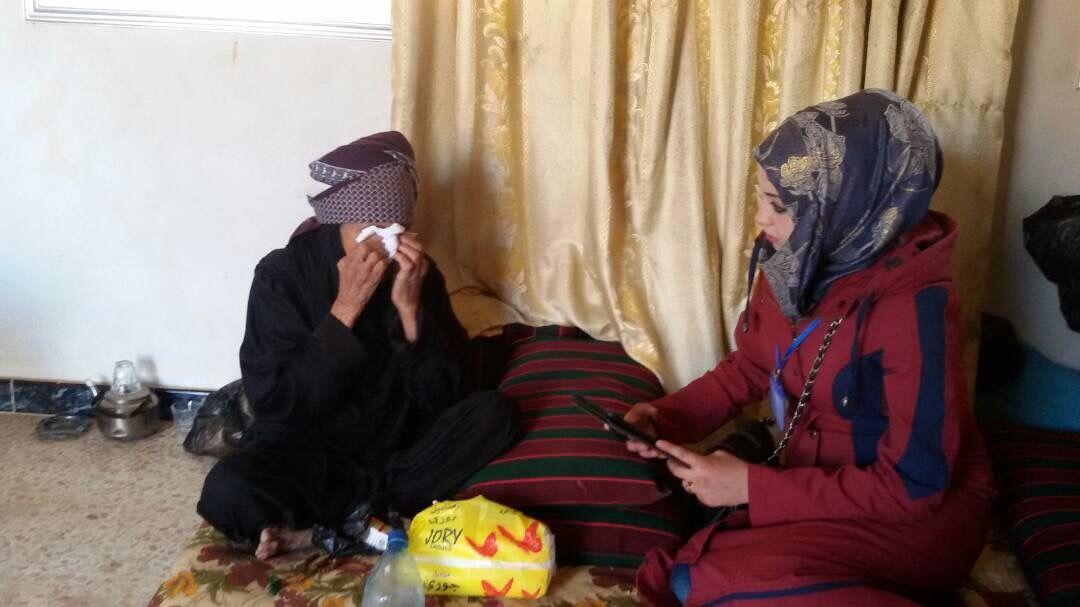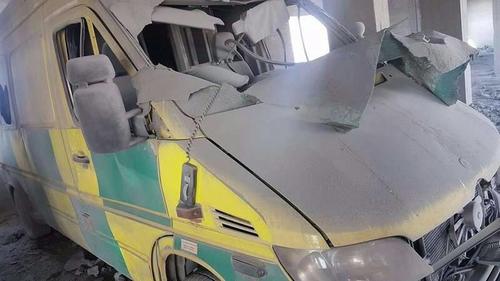- Humanitarian assistance for people living in south Syria needs to increase significantly.
- Médecins Sans Frontières today released two reports, East Daraa, Syria: Baseline Assessment and East Daraa, Syria: First Follow-Up Assessment that highlight glaring healthcare needs of the communities living in east Daraa, an area in the south of the country.
Using exclusive data, the reports provide a troubling window onto the impact of the Syrian conflict on the people. They reveal how violence has led to the displacement of almost half the population of east Daraa in recent years, and highlight dangerous healthcare gaps for mothers and children in the area, including alarming rates of risky home deliveries and poor antenatal care.
The reports also point to high rates of pregnancy and low rates of family planning use in the area. In addition, up to 60 per cent of children under the age of five have not received all the required doses of vaccines against preventable diseases. The surveys also found that for nearly half of households who had lost a family member within 12 months prior to the assessments, the cause of death was a military incident.
The reports are based on two large-scale community health surveys MSF conducted in towns and cities in east Daraa, an area with a population of about 200,000, in July 2016 and May 2017. In each assessment, community health workers interviewed more than 4,000 randomly selected individuals about their health needs and quality of life.
The study reveals that as the nearly seven-year-long conflict in Syria evolves, healthcare needs in the region have in some cases become even more acute. This suggests the volume of humanitarian assistance reaching the Syrian people and access for aid organisations is insufficient and must increase significantly to meet growing healthcare needs.
An entire generation destroyed
“We spoke to people whose homes had been damaged – in some cases multiple times – by airstrikes and who are living in vulnerable conditions,” said Dr Ghassan Aziz, health surveillance programme manager at MSF´s Centre for the Advancement of Humanitarian Medicine in Amman.
“Our data shows women and children have the most difficulty in accessing adequate healthcare. Humanitarian assistance must be increased, and for people living in south Syria in particular, the most efficient way of delivering that aid is across borders.”
Medical staff in south Syria highlight other challenges.
“The war has had a profound psychological and physical effect,” said an MSF pharmacist in south Syria.
“Some people have been physically wounded in airstrikes. There are less visible wounds as well. An entire generation has been completely destroyed because of the crisis.”
A surgeon at an MSF hospital in south Syria said although the violence has subsided, the war has left damaged infrastructure and a lack of experienced healthcare staff.
“We face challenges on all levels,” he explained.
“To access healthcare, many people have to travel long distances. Transportation is expensive, and a lot of people just can´t afford it. Functioning health facilities are scattered and most hospitals are ill equipped. In some cases, patients must travel to two or three places to receive proper medical attention; and sometimes they have to go all the way to Damascus to receive the type of care they need.”
Dr Aziz pointed out that while the studies´ findings reveal a number of areas of concern, healthcare needs in other parts of Syria are potentially more worrisome.
“Findings from both assessments in east Daraa are very representative of the Syrian population in that area,” he said.
"Unfortunately, we have not been able to reach and assess the situation in other areas affected by the conflict in the same way, and where access to healthcare might be even more problematic."
Given the scope of healthcare needs in the surveyed areas, MSF acknowledges the UN Security Council´s renewal of Resolution 2165 (now known as 2393), which allows humanitarian agencies to continue using routes across conflict lines and border crossings to deliver aid into Syria.
Yet even with the cross-border framework in place, humanitarian organisations are struggling to provide assistance to 13.1 million Syrians in need of aid, including 6.1 million internally displaced and three million living in besieged areas.
MSF is not currently present in government-controlled areas in Syria, despite requesting access from Damascus. We are concerned about the lack of alternatives to cross-border assistance, as cross-line humanitarian aid deliveries from the Syrian capital continue to be limited in scope and geographical coverage while the needs remain high.
“The cross-border delivery of aid remains a vital lifeline to millions of Syrians, and is essential to MSF´s efforts to meet the needs in south Syria,” said Aitor Zabalgogeazkoa, head of MSF´s Middle East Unit and Centre for the Advancement of Humanitarian Medicine.
“The need for unhindered and independent humanitarian aid to reach those most affected by the conflict remains.”
Key findings of the reports
- In both assessments, a large percentage of households (60.18% in baseline and 47% in follow up) had changed their settlement at least once since 2011; in more than 90% of cases they changed it because of violence.
- In both assessments (7.88% then 7.6%) of interviewed households had lost at least one family member within a year prior to the interview; and the cause of death was a military incident in almost half of the cases (45.1% vs. 43%).
- While in baseline only 21% of people who were receiving healthcare every month were doing so in formal health facilities (avoiding the facilities since they were frequently targeted); the rate became 47% in the follow up assessments.
- During baseline assessment 27% of households were living in incomplete or damaged houses that are not protected from rain and wind; that figure was a bit lower but still high at 18.7% in the follow up assessment.
- Only 40% or less of children aged between 18 months and five years had received all the required vaccine doses for preventable diseases.
- Very worrisome figures regarding women’s health: high rates of pregnancies, low rates of family planning uses, poor antenatal care, and high rates of the risky home deliveries.
During 2016, in facilities directly run or managed by MSF and mobile clinics across Syria, 372,000 outpatient consultations were provided, 5,300 medical relief kits were distributed, and 2,000 births were assisted. Other facilities that are assisted through MSF’s support programmes, where MSF staff are not present on the ground, provided a total of 2.2 million outpatient consultations, 770,000 emergency room consultations and 225,000 surgical operations. MSF is not present in government-controlled areas in Syria, despite repeatedly requesting for access from Damascus. In 2016, MSF spent more than 40 million Euros to support health services across Syria, delivered mostly through the use of cross/border routes.






